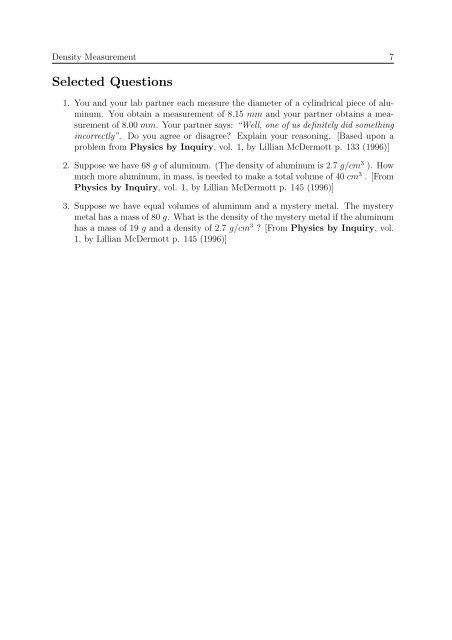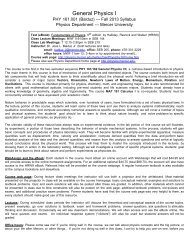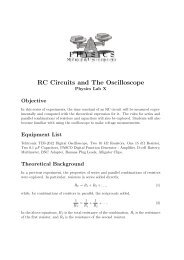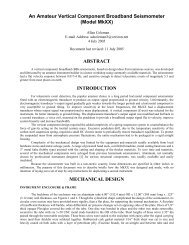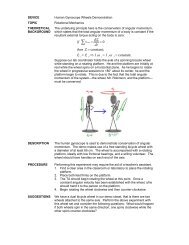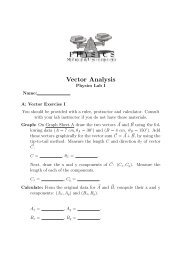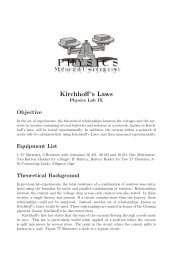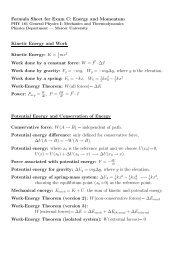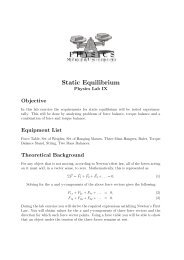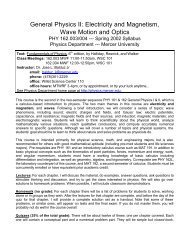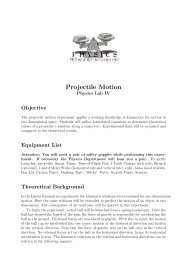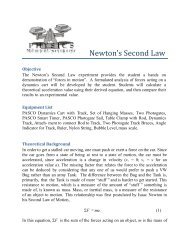Analysis of Experimental Uncertainties: Density Measurement
Analysis of Experimental Uncertainties: Density Measurement
Analysis of Experimental Uncertainties: Density Measurement
You also want an ePaper? Increase the reach of your titles
YUMPU automatically turns print PDFs into web optimized ePapers that Google loves.
<strong>Density</strong> <strong>Measurement</strong> 7Selected Questions1. You and your lab partner each measure the diameter <strong>of</strong> a cylindrical piece <strong>of</strong> aluminum.You obtain a measurement <strong>of</strong> 8.15 mm and your partner obtains a measurement<strong>of</strong> 8.00 mm. Your partner says: “Well, one <strong>of</strong> us definitely did somethingincorrectly”. Do you agree or disagree? Explain your reasoning. [Based upon aproblem from Physics by Inquiry, vol. 1, by Lillian McDermott p. 133 (1996)]2. Suppose we have 68 g <strong>of</strong> aluminum. (The density <strong>of</strong> aluminum is 2.7 g/cm 3 ). Howmuch more aluminum, in mass, is needed to make a total volume <strong>of</strong> 40 cm 3 . [FromPhysics by Inquiry, vol. 1, by Lillian McDermott p. 145 (1996)]3. Suppose we have equal volumes <strong>of</strong> aluminum and a mystery metal. The mysterymetal has a mass <strong>of</strong> 80 g. What is the density <strong>of</strong> the mystery metal if the aluminumhas a mass <strong>of</strong> 19 g and a density <strong>of</strong> 2.7 g/cm 3 ? [From Physics by Inquiry, vol.1, by Lillian McDermott p. 145 (1996)]


